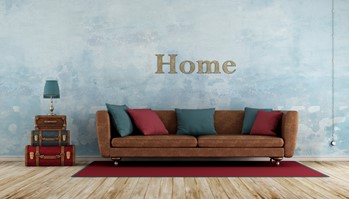 Finding out the quality of furniture at a furniture store can be difficult. Product descriptions are written with the goal of getting you to buy. What’s more, floor sales employees will boast about the quality of their “genuine bonded leather,” how easy it is to clean and how long it lasts.
Finding out the quality of furniture at a furniture store can be difficult. Product descriptions are written with the goal of getting you to buy. What’s more, floor sales employees will boast about the quality of their “genuine bonded leather,” how easy it is to clean and how long it lasts.
What many people don’t know is that words like “genuine” don’t mean “real” leather, but rather a grade of leather. Genuine leather is, in fact, the second worst type of leather in terms of quality and durability.
To help you avoid this and other blunders at the furniture store, we’ve written a simple guide to furniture leather that aid you in making the most informed decision possible the next time you’re at the furniture store. After all, furniture is expensive, and you want to make sure you get the best option for you and your family.
Bonded. The most basic thing to understand about leather are the grades. At the bottom of the list, or the lowest grade leather, is bonded leather. The word “leather” is actually generous in this scenario because bonded leather is really made up of fragments of leftover leather that have been glued together (or “bonded”) with latex or poly.
Bonded leather is often used for furniture because large items like sofas require so much of it. Manufacturers won’t soon tell you just how much of the sofa is comprised of leather and how much of it is composed of latex, so be wary of spending a lot of money on bonded leather furniture.
Genuine. Genuine leather, also known as “corrected grain” leather has artificial grain applied to its surface. This top grain is designed to increase the visual appeal of the leather by changing the texture and pigmentation to create different colors.
While genuine leather is a step above bonded leather, it is also subject to wear as the surface isn’t true leather.
Suede. Suede is a type of “split grain” leather, meaning that the top of the piece of leather has been removed and sanded forming the soft, suede texture and color we are all familiar with.
Top and full grain. The highest quality leathers are top and full grain. Top grain has had the split removed which makes it both easier to work with as well as softer and more flexible. Full grain, on the other hand has not had the split removed and is often unbuffed and unsanded. It isn’t as common to see this type of leather used in furniture because the imperfections are often removed in favor of a more visually congruent leather. However, since full grain hasn’t had any layers removed, it is easily the most durable type of leather.
Now that you know more about the types of leather, here are some tips for when you hit the furniture store.
Each manufacturer may use their own numbering system for grading leather, so don’t count on them being accurate.
Treated leather, in spite of seeming lower quality, may be more resistant to stains and thus preferable for a family with kids and pets.
Leather furniture that has received minimum treatment and includes the top grain requires specific cleaning. Don’t attempt to condition the leather with oils like you might a leather shoe that has been subject to the elements. Rather, use warm, damp, soft cloth to wipe down the leather every month or so. Soaps and cleaning solutions can do more harm than good to quality leather.